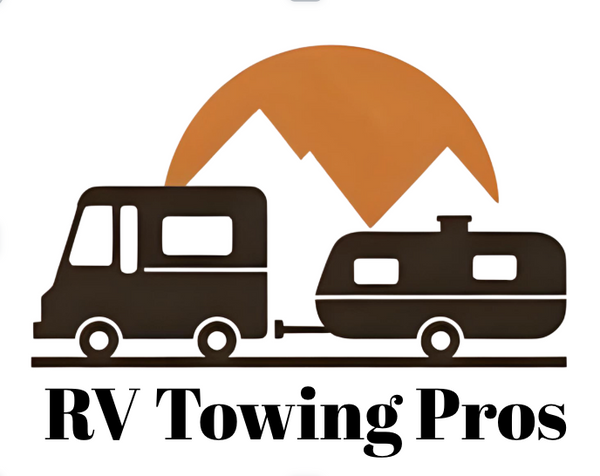Weight Distribution Hitches: All You Need To Know
Share
Ultimate Guide to Weight Distribution Hitches: Enhance Your Towing Experience with Stability and Control
Towing a trailer or RV involves more than just hooking up a hitch. Proper weight distribution is essential for safety, control, and comfort during your journey. In this guide, we’ll walk you through everything you need to know about weight distribution hitches (WDHs), including why they’re important, their benefits, how they work, and how to select the right one for your towing needs.
Why Choose a Weight Distribution Hitch?
When towing heavy loads, stability is key. Without a weight distribution system, the trailer’s load can push down on the rear of your tow vehicle, reducing traction on the front tires and leading to unsafe driving conditions. A weight distribution hitch redistributes the weight more evenly between the tow vehicle and the trailer axles, giving you better control, reducing sway, and enhancing your towing safety.
Benefits of Weight Distribution Hitches
Using a weight distribution hitch offers several key benefits:
-
Improved Towing Stability: A WDH prevents the rear of the tow vehicle from sagging, which keeps the vehicle level and increases control.
-
Enhanced Handling and Braking: By evenly distributing weight, the WDH ensures that all tires maintain equal load, which improves braking efficiency and handling, especially when navigating turns.
-
Reduced Sway: Weight distribution hitches often come with sway control, which can reduce side-to-side movement caused by wind or passing vehicles.
-
Better Tire Wear: Even weight distribution also leads to more even tire wear on both the tow vehicle and the trailer.
-
Smoother Ride: Whether on highways or uneven roads, a WDH ensures your towing experience is much smoother and more stable.
Unveiling Sway Control
One of the most important aspects of a weight distribution hitch is its ability to reduce trailer sway. This can be caused by wind, passing trucks, or even an improperly loaded trailer. Many modern WDH systems include built-in sway control, which provides friction to the spring bars to keep your trailer in line and reduce movement. This additional feature ensures greater safety, especially in windy conditions or when towing large trailers.
2-Point vs. 4-Point Systems: Choosing the Right Fit
When selecting a weight distribution hitch, one of the key decisions is whether to go with a 2-point or 4-point system.
-
2-Point Systems: These systems include the spring bars and the hitch head. They are simpler, more affordable, and ideal for lighter trailers. They provide effective weight distribution but may not offer as much sway control as 4-point systems.
-
4-Point Systems: These systems include both weight distribution and additional sway control features. With 4 points of connection (two on each side of the trailer), they provide superior stability, especially for larger and heavier trailers. They are the preferred choice for RVs and larger haulers, offering both weight distribution and sway control in one comprehensive package.
How to Determine the Right Size Weight Distribution Hitch for Your Towing Needs
Choosing the right weight distribution hitch depends on two key factors: the Gross Trailer Weight (GTW) and the Tongue Weight (TW) of your trailer. Here's how to ensure you select the proper hitch:
-
Find Your Trailer’s Weight: Your trailer’s GTW is the total weight of the loaded trailer, while the TW is the weight pushing down on the hitch.
-
Check Hitch Capacity: Choose a hitch that matches or exceeds your trailer's TW and GTW. For instance, if your trailer has a 500-pound TW, you'll want a hitch that can handle at least that amount.
-
Factor in Safety Margin: For added safety, choose a WDH with a slightly higher weight capacity than your trailer's specifications.
The Center Line: Unmatched Performance and Sway Control
For those seeking top-notch performance, the Center Line series of weight distribution hitches offers unmatched sway control and stability. This advanced system includes a built-in sway control mechanism and an integrated weight distribution setup, making it perfect for larger trailers. The Center Line system provides a smooth, balanced towing experience with reduced sway, better braking, and overall enhanced control.
Installing Your Weight Distribution Hitch: A Step-by-Step Guide
Installing a weight distribution hitch is straightforward, though it does require some attention to detail to ensure safety. Here’s a step-by-step guide:
-
Level Your Vehicle and Trailer: Ensure both the tow vehicle and the trailer are level before beginning installation.
-
Mount the Hitch Head: Attach the hitch head to the receiver of your tow vehicle, ensuring it’s secure and tight.
-
Attach the Spring Bars: Hook the spring bars onto the hitch head, ensuring they are properly aligned.
-
Install the Sway Control (if applicable): If your system includes sway control, attach the sway control arms according to the manufacturer’s instructions.
-
Adjust the Height: Measure the height of the hitch and make adjustments as needed to ensure the proper weight distribution.
-
Test the Setup: Before hitting the road, take your vehicle and trailer for a short test drive to make sure everything is functioning correctly.
For a more visual guide, check out the videos below:
Video 1: Weight Distribution Hitch Installation
Video 2: Choosing the Right Size WDH
Video 3: Sway Control and Performance
By understanding the importance of weight distribution hitches and knowing how to choose and install the right one for your trailer, you can ensure a safer, smoother, and more controlled towing experience. Whether you’re a seasoned RV traveler or a first-time hauler, investing in the right weight distribution system is crucial for optimizing both your safety and your enjoyment on the road.
